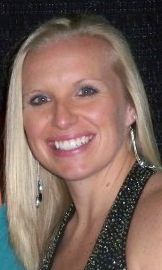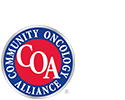Advancing Melanoma Research & Supporting Patients
Our series on melanoma concludes as we shine the spotlight on the Melanoma Research Foundation (MRF). We spoke with the MRF’s Director of Education, Shelby Moneer, MS, CHES and MRF’s Scientific Advisory Committee Co-Chair, Michael B. Atkins, MD, PhD, Deputy Director of the Georgetown-Lombardi Comprehensive Cancer Center, Georgetown University.
The MRF is the largest independent organization devoted to melanoma. Its mission is three-fold. It supports medical research that leads to more effective treatments and eventually a cure for melanoma. It educates patients, physicians and the public about the prevention, diagnosis and treatment of melanoma. And it serves as an advocate for the melanoma community to raise awareness of melanoma and the need for a cure.
Research & Patient Support Priorities
Real World Health Care: What type of research programs does the MRF support?

Shelby Moneer, Melanoma Research Foundation
Shelby Moneer: The Melanoma Research Foundation is committed to advancing a broad scientific agenda across the disciplines of prevention, diagnosis and treatment. As part of the MRF’s mission to support medical research to find effective treatments and a cure for melanoma, we are proud to collaborate with internationally recognized research institutions, investigators, government entities and leading melanoma organizations. The MRF currently offers research awards for medical students, junior investigators and senior investigators in both clinical and translational science. We fund research related to cutaneous, mucosal and ocular melanoma.
RWHC: How does the MRF support the patient community?
SM: The MRF provides a broad range of patient support programs offering access to peer-to-peer educational information, as well as professionally moderated support networks, financial and treatment assistance and more. These are continually updated and expanded as new resources become available because we believe that educated and informed patients with a strong support network live longer, better lives.
The MRF advocates for the melanoma community on the local, state and federal level on issues that promote melanoma awareness, prevention and treatment. Current priorities include increased federal funding for melanoma research, restrictions on the use of indoor tanning devices and expanded access to sunscreen in schools. The MRF trains and supports a nationwide network of dedicated volunteers who serve as advocates everywhere from their local communities to the halls of Congress.
RWHC: What are some of the biggest challenges facing researchers studying melanoma?

Dr. Michael B. Atkins, Georgetown-Lombardi Comprehensive Cancer Center
Michael Atkins: The MRF feels that the biggest challenge is helping to launch the careers of young investigators who are interested in doing research into the biology and treatment of patients with melanoma. The MRF is addressing this challenge by offering an expanded number of Career Development grants in the coming year targeted toward young investigators.
Treating Melanoma Patients
RWHC: How are clinicians addressing the challenges of treating patients with melanoma?
MA: For clinicians, the big challenges are learning how to optimally use new treatment options for patients with melanoma. For example, identifying how to integrate targeted therapy with immune therapy, when to stop immune therapy, how to treat patients with variant melanoma presentations (acral, mucosal, uveal) and patients with CNS metastases, how to treat patients with resistance to immunotherapy, determining the best adjuvant therapy for patients with resected high and intermediate risk melanoma, identifying predictive biomarkers for particular treatment approaches, identifying safe and effective combination regimens, and learning how to manage the novel toxicities of immunotherapies.
These questions can only be answered through continued clinical research. The MRF is addressing these challenges through the Melanoma Research Foundation Breakthrough Consortium (MRFBC), which brings together clinical investigators from 20 leading academic melanoma centers to design and conduct clinical trials addressing these types of questions.
RWHC: How can patients work with clinicians to optimize their treatment?
MA: Melanoma patients face the challenge of getting the best treatments for their disease in a setting that is convenient for them and will get them back to their normal lives as quickly and as functionally intact as possible. Patients can work with clinicians by participating in clinical trials aimed at both providing tomorrow’s treatments today and addressing the important unanswered questions facing researchers. Patients can also go to organizations like the MRF to gather information about optimal management of their disease, unanswered questions and available clinical trials. Their support community can work with and contribute to MRF to foster the clinical and basic research that will lead to even further advances in the treatment of patients with melanoma.
RWHC: What does the MRF see as the most promising treatments on the horizon for melanoma?
MA: The MRF sees many promising new treatment opportunities including novel combination immunotherapies, triple combination of BRAF/MEK and anti-PD1 regimens and moving effective treatments for advanced disease into the adjuvant high risk setting.

















